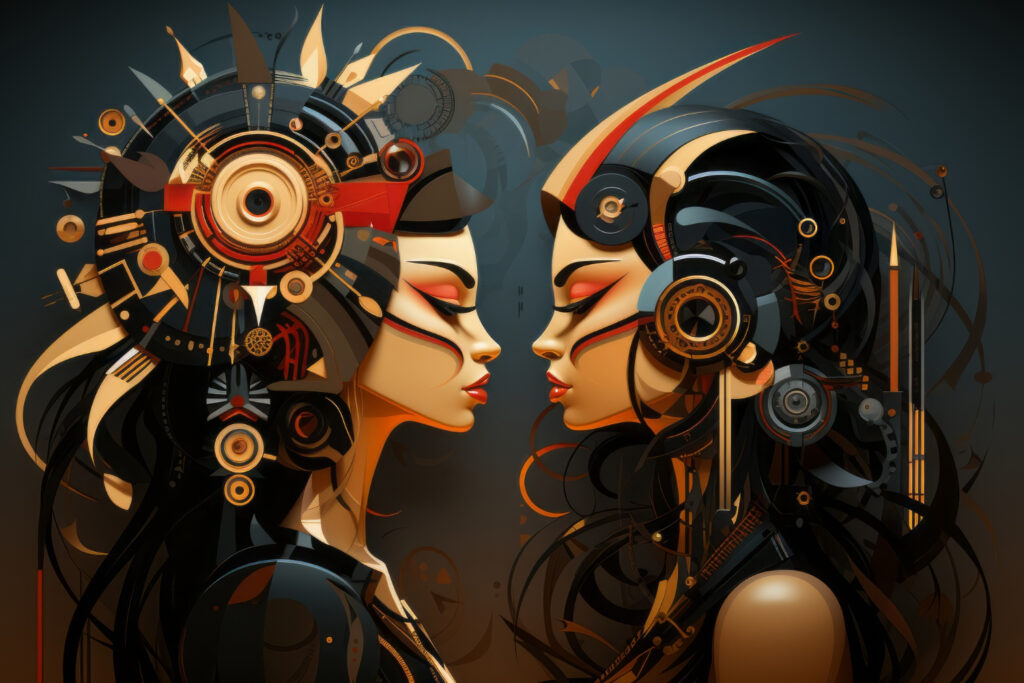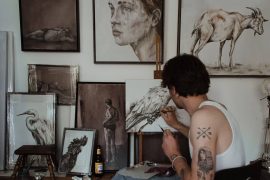The Mona Lisa’s enigmatic smile has captivated audiences for centuries. But what if, in the future, her enigmatic gaze could be replicated with a few clicks of a mouse?
Artificial intelligence (AI) is rapidly transforming the art world, churning out visually stunning and conceptually intriguing pieces.
However, the question remains: can AI-generated art ever truly replace the value and allure of a hand-crafted original artwork?
AI’s Artistic Arsenal: Speed, Spectacle, and Spot-on Replication
AI art boasts undeniable advantages. Unlike their human counterparts who toil for years honing their craft, AI algorithms can generate a mind-boggling array of artistic styles and themes in a matter of seconds.
Struggling with creative block? An AI tool can churn out a dozen variations on your initial concept, sparking new ideas and igniting the wellspring of inspiration.
Beyond sheer speed, AI art possesses an uncanny ability to produce hyper-realistic and technically flawless works! Imagine replicating the intricate brushwork of a Dutch Golden Age masterpiece or capturing the swirling light and shadow of a Caravaggio painting.
With AI, achieving such technical mastery becomes a matter of feeding the algorithm the right data sets. This efficiency can be a game-changer for artists seeking to push the boundaries of detail and realism.
One particularly fascinating application of AI art is its ability to resurrect lost artistic styles. In 2018, researchers used AI to recreate the long-lost paintings of Zeuxis, a legendary Greek artist whose works were so lifelike they supposedly fooled birds.
This ability to bridge the gap between past and present artistic movements opens doors for historical and artistic exploration.
The Heart of Handmade Art: Where Emotion Meets Imperfection
However, the allure of AI art lies primarily in its technical prowess, not its emotional depth. Every brushstroke, every deliberate smudge, and even the occasional happy accident on a handmade artwork tells a story about the artist’s process and emotions.
These imperfections become badges of authenticity, whispers of human vulnerability that AI simply cannot replicate.
Owning a piece of handmade art fosters a deeper connection with the artist’s vision. Imagine gazing upon a Van Gogh sunflower, its swirling brushstrokes mirroring the inner turmoil of the artist.
Or standing before a Jackson Pollock drip painting, feeling the artist’s frenetic energy captured in the splatter of paint. These connections transcend the visual; they become a form of dialogue with the artist’s soul.
Beyond the Canvas: AI as an Artistic Muse
Instead of viewing them as adversaries, AI and handmade art can co-exist in a symbiotic relationship. AI can be a powerful tool in the artist’s arsenal, fuelling creative exploration in fascinating ways.
Imagine a sculptor using an AI program to visualize different poses for their clay creation in 3D, allowing them to experiment with movement and balance before ever touching the material.
Painters can leverage AI to explore variations on their favourite artists’ styles, feeding their chosen masters’ works into an algorithm to generate new colour palettes or unexpected textural effects.
This type of AI-assisted exploration can spark fresh ideas and help artists break free from creative ruts.
The Enduring Legacy of Originality: Owning a Piece of History
While AI art has a rightful place in the evolving art landscape, it’s unlikely to replace the value of a handmade original.
There’s a unique magic in the physicality of art – the texture of oil paint on canvas, the delicate lines of a charcoal sketch, the smooth feel of a hand-thrown ceramic mug.
Owning a handmade piece is not just an aesthetic investment; it’s acquiring a piece of history, a tangible connection to the artist’s creative journey.
Consider the story of Leonardo da Vinci’s “Salvator Mundi.” This long-lost masterpiece was rediscovered in 2005, restored, and ultimately sold at auction for a record-breaking $450.3 million.
The astronomical price tag wasn’t simply for the painting’s subject matter or historical significance. It was for the thrill of owning a one-of-a-kind artwork by a legendary artist, a piece imbued with the touch of a human hand and the whispers of a bygone era.
The Future of Art: A Fusion of Machine and Muse
The rise of AI art doesn’t signal the end of the traditional artist. Rather, it heralds a new era of artistic exploration, where human creativity and technological innovation co-exist.
AI can streamline tedious tasks, generate fresh ideas, and even help with the physical creation of art through technologies like 3D printing.
But the spark of inspiration, the emotional depth, and the enduring legacy of human creation – these are qualities that AI will continue to struggle to replicate.
Perhaps the future of art lies not in a battle between human and machine.






